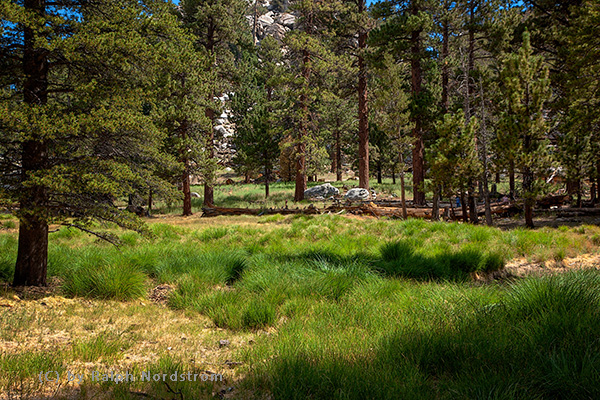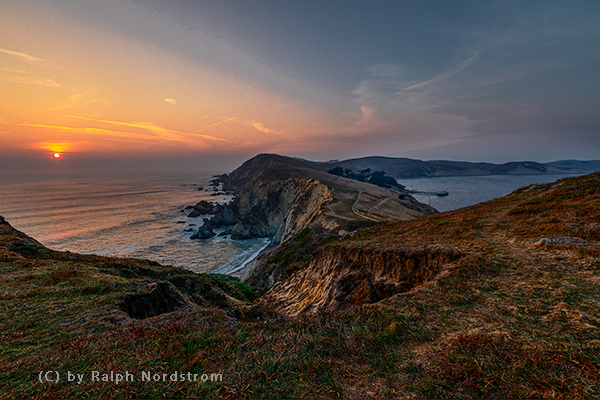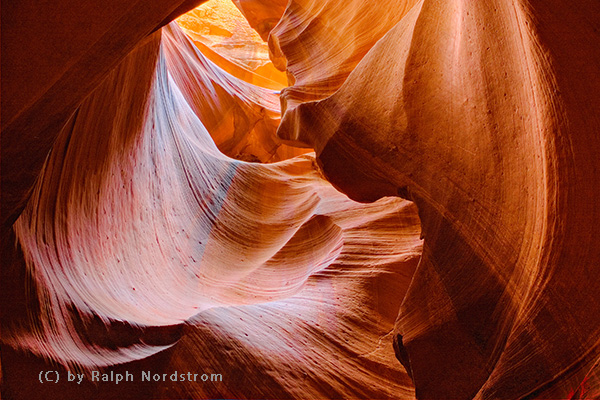I often get asked if I manipulate my photographs. My answer is always, “Yes, of course!” But no one has ever asked, “Why?” And I have an answer for that too. “Because my camera doesn’t know what I’m feeling.”
For me, making a photograph is making art. I want to do more than capture where I’ve been and what I’ve seen. I want to share with you what I feel when I’m out there. And that is often more intense than what my eyes see.
I was in Long Valley last summer preparing for a photography class I was teaching for the Mount San Jacinto Natural History Association. It was midday and I was walking around wearing my amber tinted Polaroid sun glasses. Why do I mention my sun glasses? Because I was getting very excited about what I was seeing. And for those of you that know about midday light, it is anything but exciting. But the amber tint of the glasses and the effect of the polarization on the sky and foliage got me excited. Added to that was how good it felt to be back in these mountains after an absence of 15 years.
I want to share what I feel…. And that is often more intense than what my eyes see.
So, I asked myself if it was OK to make photographs that reflected my mental state when it contradicted the physical reality of what my eyes saw.
I’m sure you’re not surprised that I opted for the mental state.

In fine art photography circles there is a lot of talk about ‘previsualization.’ That is the ability to look at a scene and visualize in your mind’s eye what the final print will look like. It’s not easy and it doesn’t always happen, at least not for me. But sometimes I feel a very strong connection to what I’m about to photograph and I know just what I want to make it say. The Long Valley photograph above is an example.
Sometimes you have an idea of what you want but the photography god just doesn’t cooperate. This past fall I was at the Point Reyes National Seashore, out on the peninsula that protects Drake’s Bay from the rage of the tumultuous Pacific Ocean. We were there for sunset. But the horrible Paradise wildfire, more than 150 miles away, polluted the air with smoke. And the sunset was a disappointment. I photographed it anyway using techniques that would enhance my chances, but I wasn’t holding my breath that I could turn it into the vision I hoped for.
Sometimes the image is hiding and you just need to not give up on it but keep on working with it.
And the first few goes at it in the digital darkroom supported my expectation of a lost cause. It just wasn’t working. But something kept me going. Sometimes the image is hiding and you just need to not give up on it but keep on working with it. When I returned to it, I found the rush of excitement I was hoping for. All the curve balls that the horrible tragedy in Paradise and Mother Nature threw at us were somehow overcome.

And then there are times when you discover what the image wants to say as you work with it. You start with an idea in mind and work diligently toward that end. But no matter what you try it just doesn’t work.
… sometimes making a photograph is a collaborative effort between the photographer and the image.
That was the case when I first photographed Upper Antelope Canyon some 13 years ago. The photograph of what is called the Corkscrew stood out from all the rest and I had an idea for it. I pursued the idea when I got it into the digital darkroom. I tried all sorts of things to realize why vision. But the image refused to cooperate. It’s like the image had its own vision. Finally, after weeks of struggling I surrendered and basically said, “OK, I’ll do it your way” What I discovered is that sometimes making a photograph is a collaborative effort between the photographer and the image. And when I realized and accepted this it finally worked.

I like to say in my classes and workshops, “When you press the shutter the work has just begun.” The skills we acquire and apply in the field, skills related to light, composition, sharpness and exposure, serve to create a solid starting point from which we can realize our vision. It’s the emotion we can pour into our images that make them worth seeing and worth living with. It’s what gives our images soul. And it’s an honor to be able to share them with you.
(210)
